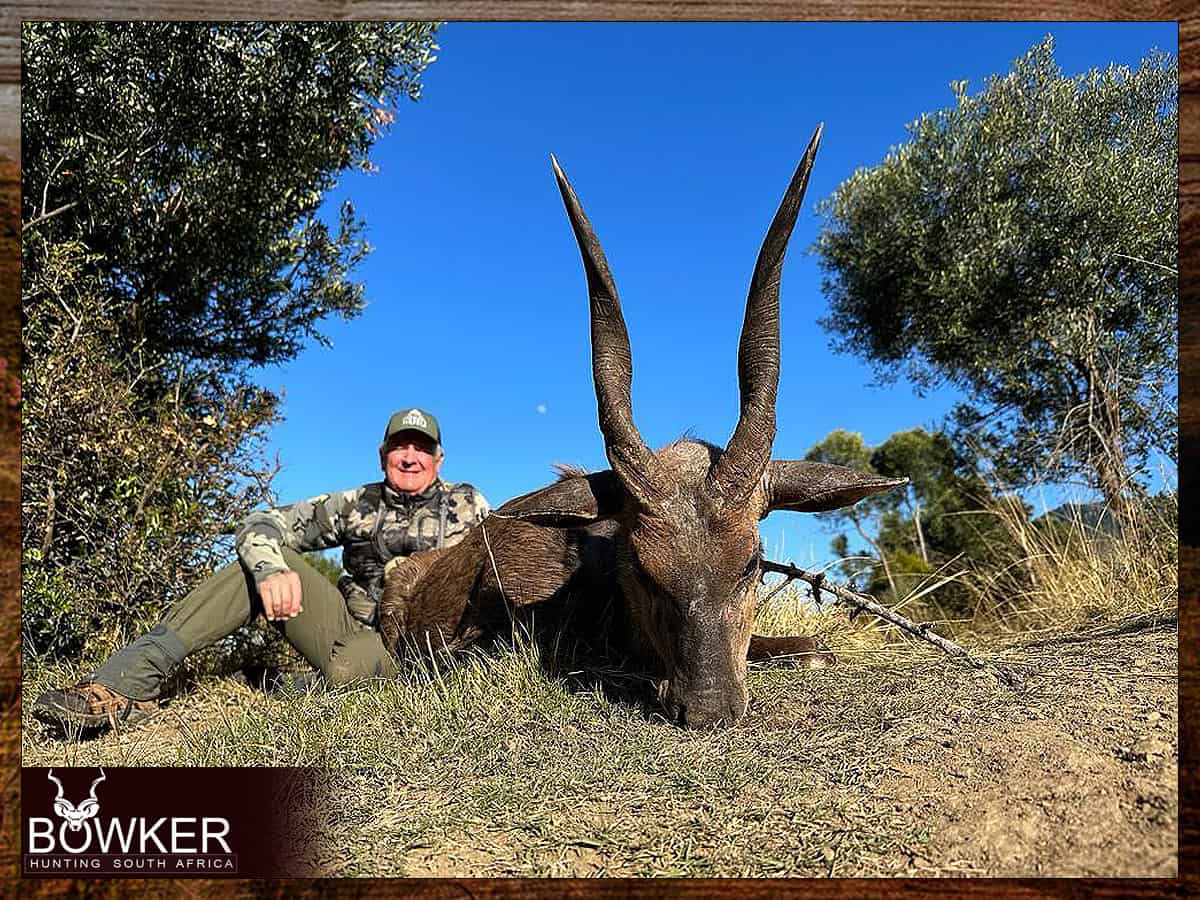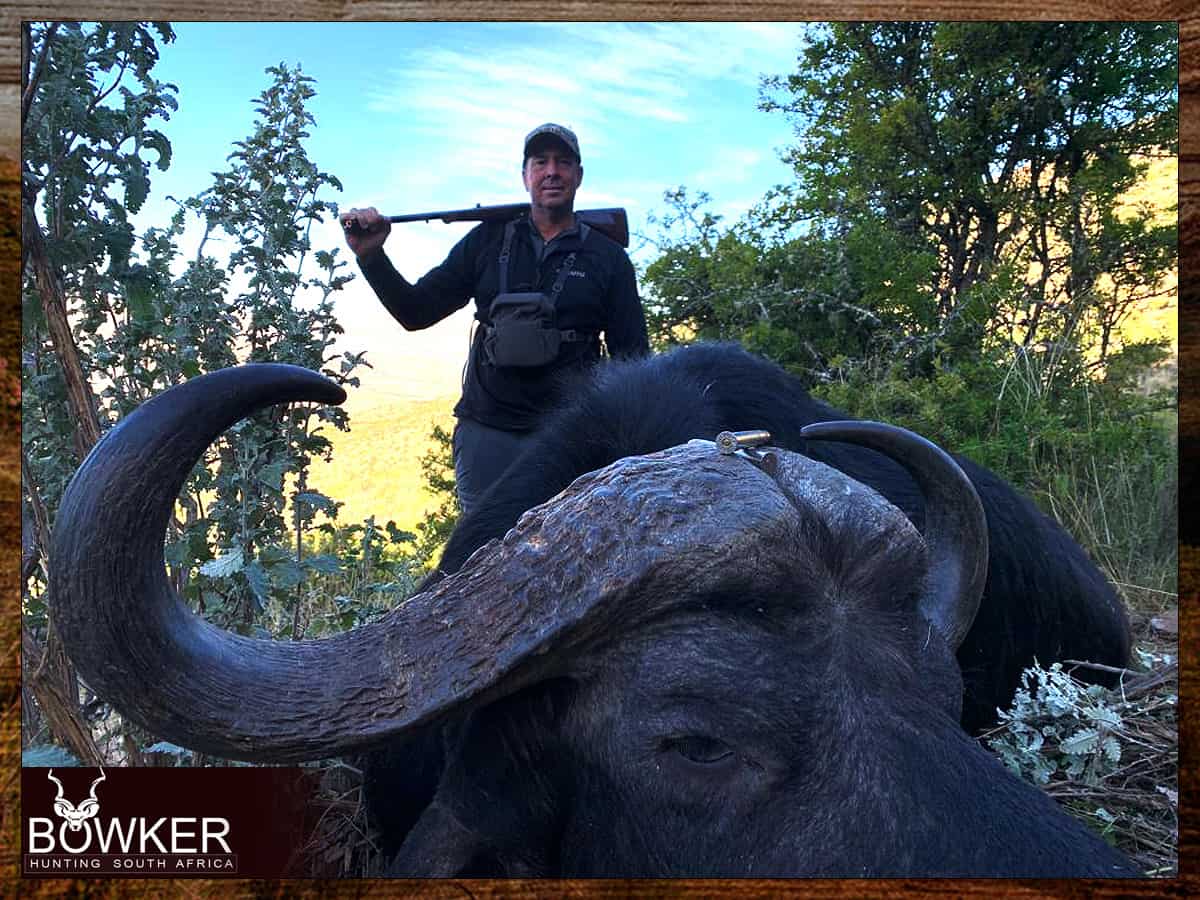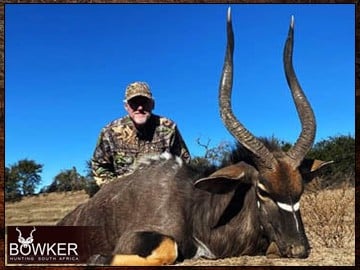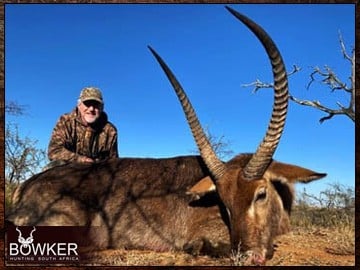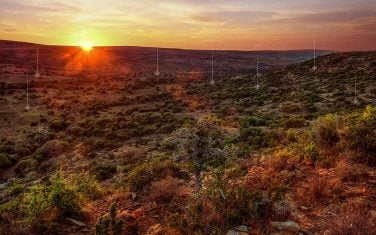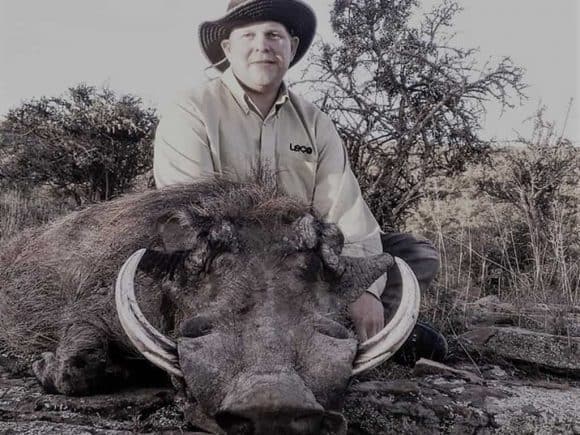Are You Researching Africa Hunting Trips?
Are you a hunter and researching or planning your first African Hunting Safari? We offer cost-beneficial All-Inclusive Africa Hunting Packages. This website contains detailed information on planning hunting safaris in South Africa.
We practice Fair Chase Hunting in a free-range environment with 30 species of trophy plains game. Nick Bowker is an Outfitter in South Africa offering a tailored, personalized safari hunting experience.
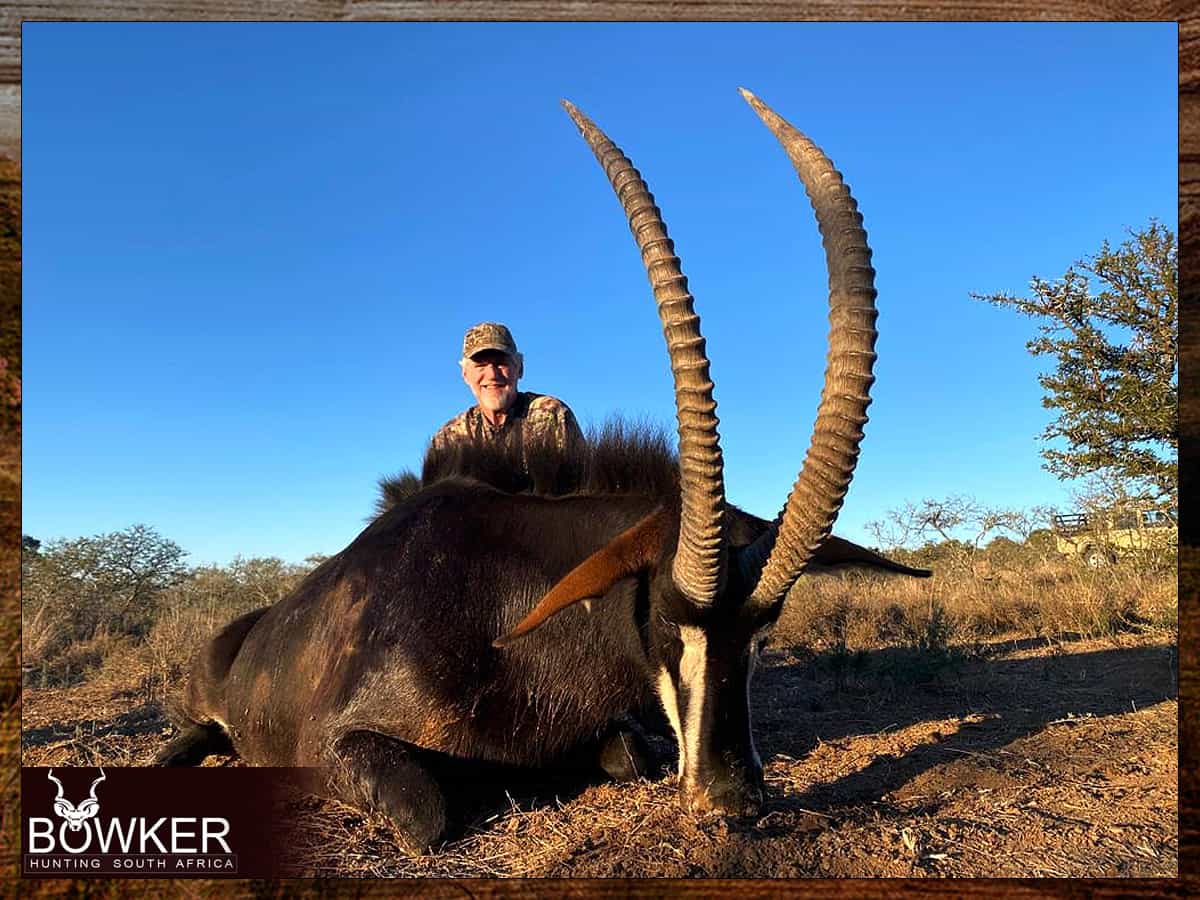
Big game hunting in Africa offers a unique and thrilling experience for hunters around the world. The continent is home to diverse ecosystems and majestic species, including the Sable Antelope and Cape Kudu.
Table of Contents
Hunting in Africa
South Africa has become the premier hunting destination in Africa and offers first-world hospitality and infrastructure. Nowhere else can such diversity and availability of animals for hunting safaris be found at a reasonable cost.
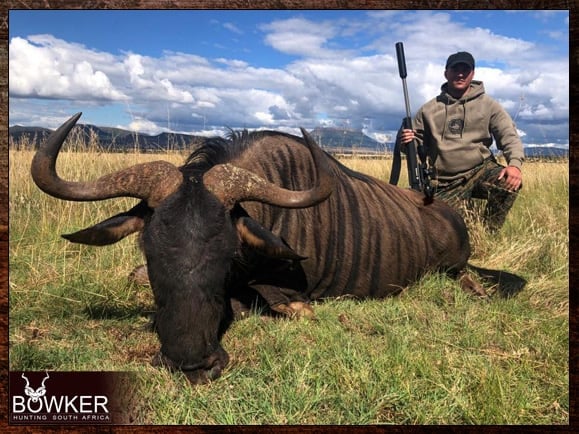
Getting to South Africa is easy, and visitors from the United States or the European Union do not require a visa. Please take a look at our detailed planning and information guide for first-time African hunters.
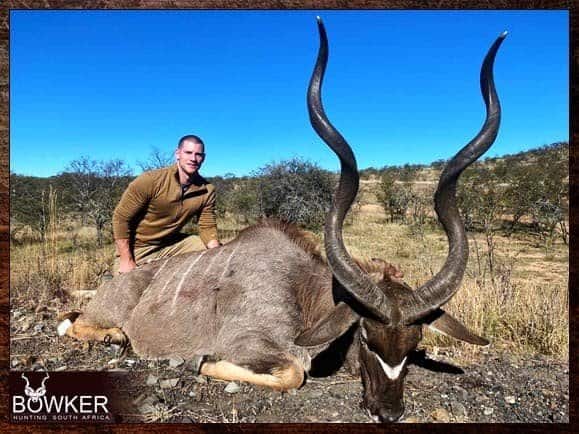
Hunting in Southern Africa is conducted Safari Style, where hunters drive around searching for plains game. When sighted, hunters stalk on foot. Alternatively, hunting is from an elevated vantage point, and a trophy is spotted in the thick brush and then stalked. Bow Hunting is from a hide overlooking a waterhole or feeding point.
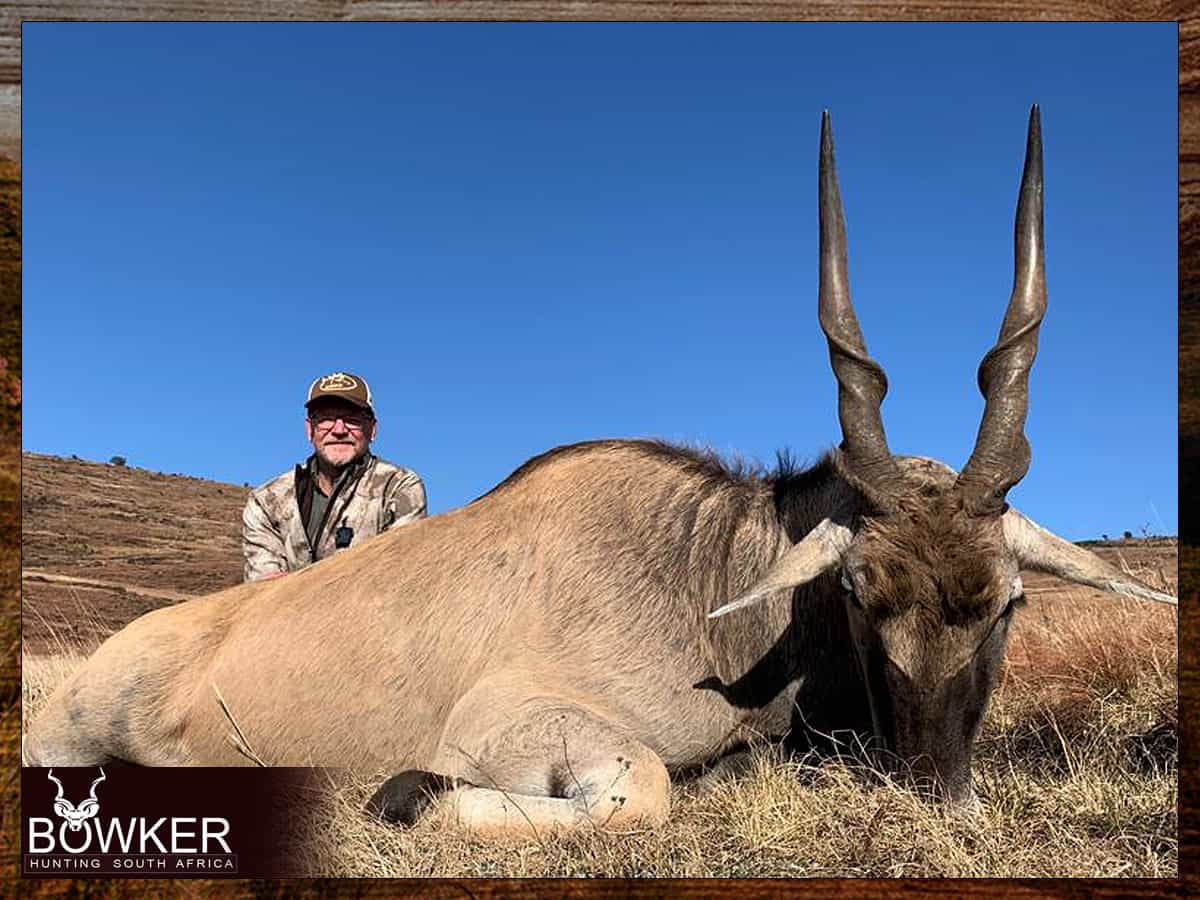
Our Hunt Areas and Free Range Game Hunts in South Africa
Our hunting is on low-fenced ranches with four-foot barb-wired fences to keep sheep and cattle. Plains game primarily moves at will over and through these low fences.
We do not shoot in traditional high-fenced game farms where we drive on the same roads daily and shoot games from the truck.
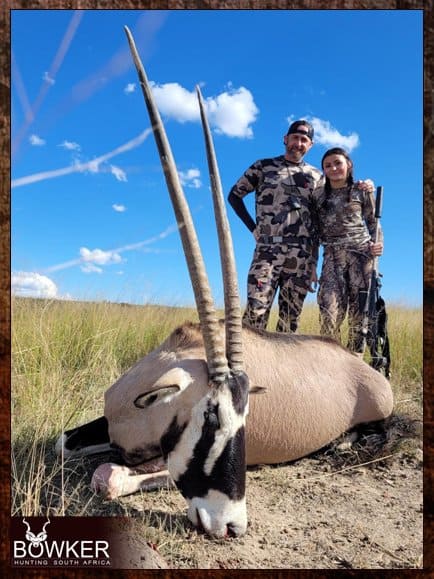
We have access to over 2 million acres of farmland for hunting in and around Bedford.
Our ALL-Inclusive African Safaris Packages
We offer a selection of plains safaris, big game hunts, and dangerous game hunts for all budgets. Our hunting packages are 10 days, including the arrival and departure days. A high-end rifle, optics, and ammunition are offered free of charge to all hunters.
Kudu & Gemsbok Package
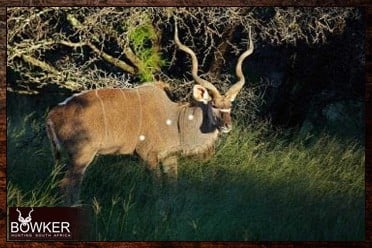
1 Hunter $6000
- Kudu
- Gemsbok
- Blesbok
- Impala
- Springbok
- Warthog
- Mountain Reedbuck
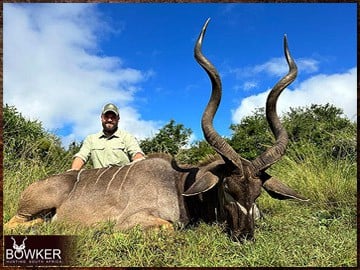
Sable Big Game Package
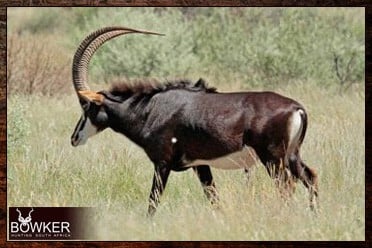
1 Hunter $9000
- Sable
- Kudu
- Waterbuck
- Nyala
- Gemsbok
- Black wildebeest
- Zebra
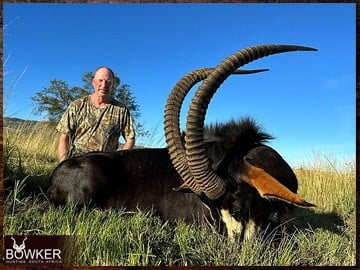
Cape Buffalo Packages
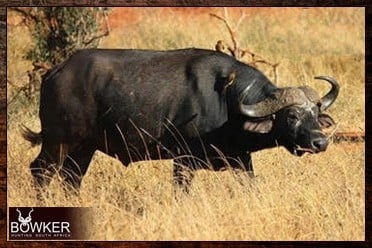
1 Hunter $18000
- Cape Buffalo
- Red Lechwe
- Nyala
- Waterbuck
- Bushbuck
- Gemsbok
- Black Wildebeest
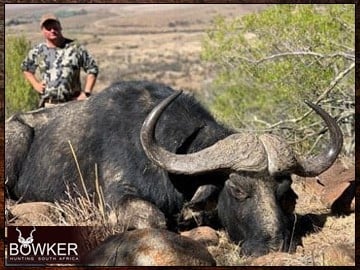
Cape Buffalo Big Game Packages – Dangerous Game Hunts
Nick Bowker has a dangerous game license and offers a wide selection of buffalo safaris. Hunting Buffalo is one of Africa’s most iconic safari hunts. We have outstanding hunting areas for buffalo.
Our concession area is in the mountains with very thick brush in a large area. This Buffalo hunt is proper. The bulls are challenging to find and shot at close range. Be prepared to be charged!
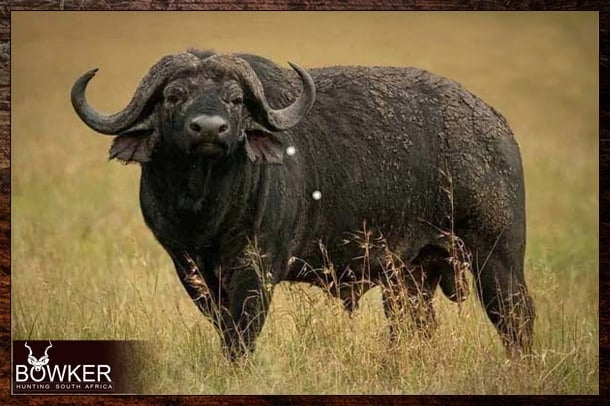
Our core Plains Game Animals list includes the following game hunt species:
- Kudu hunts
- Gemsbok hunts
- Blue Wildebeest hunts
- Black Wildebeest hunts
- Eland hunts
- Blesbok hunts
- White Blesbok hunts
- Steenbok hunts
- Fallow Deer hunts
- Mountain Reedbuck hunts
- Zebra hunts
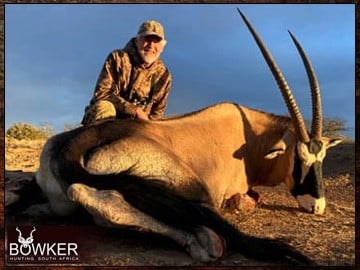
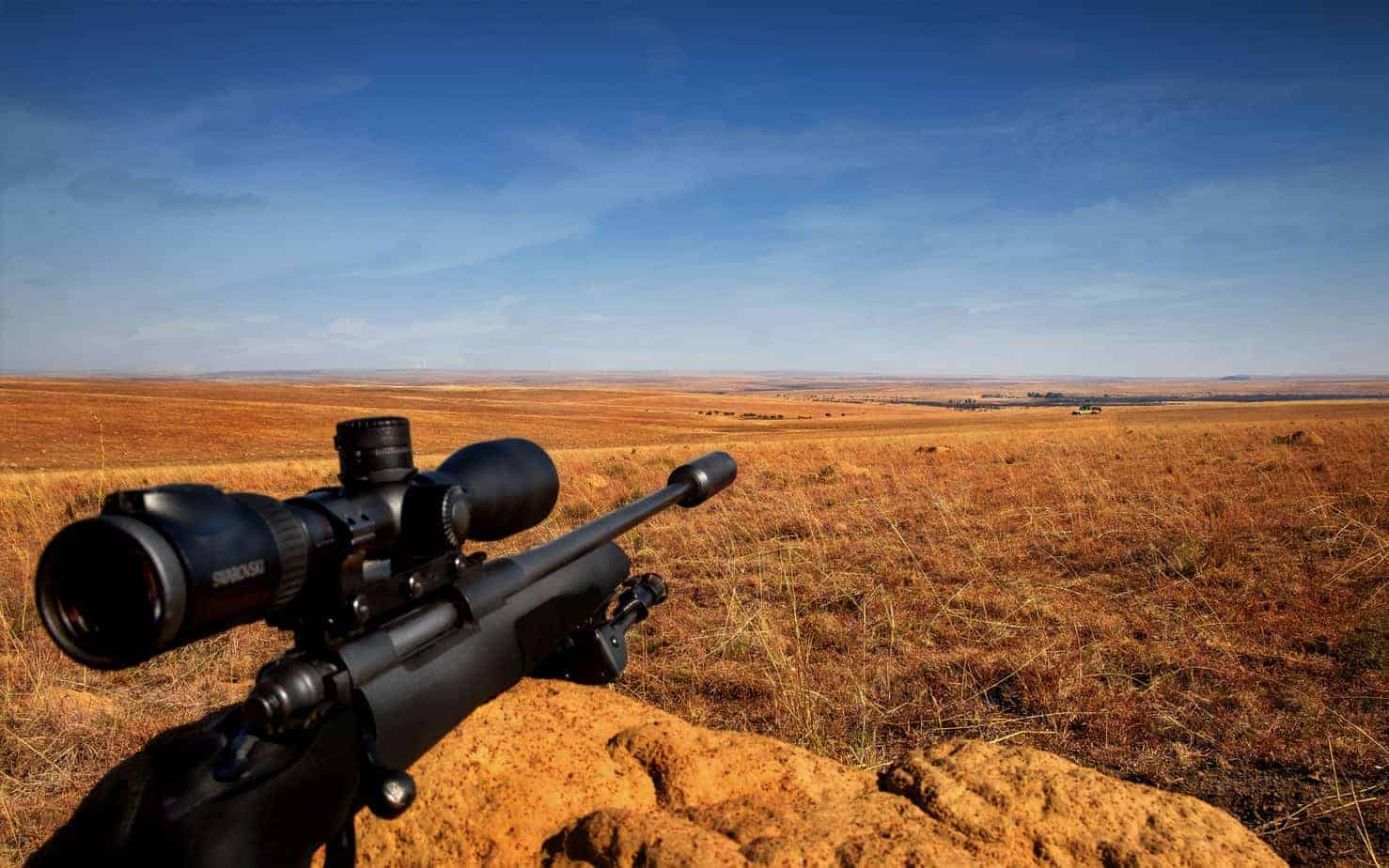
Fair Chase African Hunts – Nick Bowker Hunting
Nick Bowker Hunting
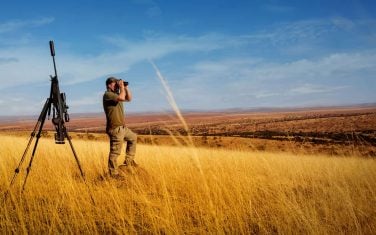
- I am a small personalized African Outfitter in the Eastern Cape – Bedford, South Africa.
- Bedford is one of the safest areas to hunt in Africa.
- I have been a Guide and Outfitter for 25 years.
- I will be present for your entire safari.
- I have a dangerous game license if the Cape Buffalo is on the menu.
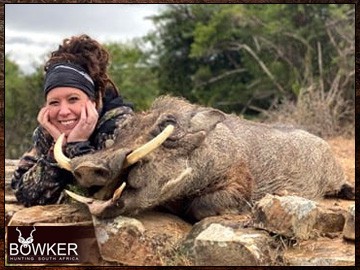
Our Concessions
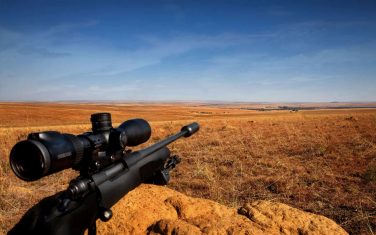
- Your hunting safari will be a fair chase in free-range, low-fenced hunting areas.
- The hunting lodge sits on an escarpment and has four unique biospheres.
- This unique change in biospheres results in a considerable animal diversity with 30 species of trophy-quality game.
- We have a number of ranches owned by the Bowker family.
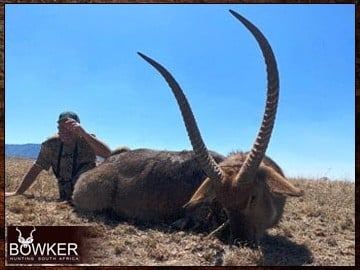
South Africa
- South Africa has become the premier country in the world for reasonably priced hunting.
- South Africa Offers first-world hospitality and infrastructure for safaris.
- An African safari visit can be combined with a national park trip to see the “Big Five.”
- Hunting is conducted in a malaria-free area in the Bedford region in the East Cape – South Africa.
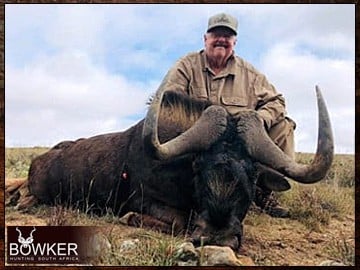
Hopewell Safaris African Hunt Lodge
We are proud to announce the opening of our new safari hunting accomodation, Hopewell, in South Africa. Nestled at the top of a valley, we have breathtaking views of the surrounding bush veld and savanna with the Kagga and Winterberg mountain ranges in the background.
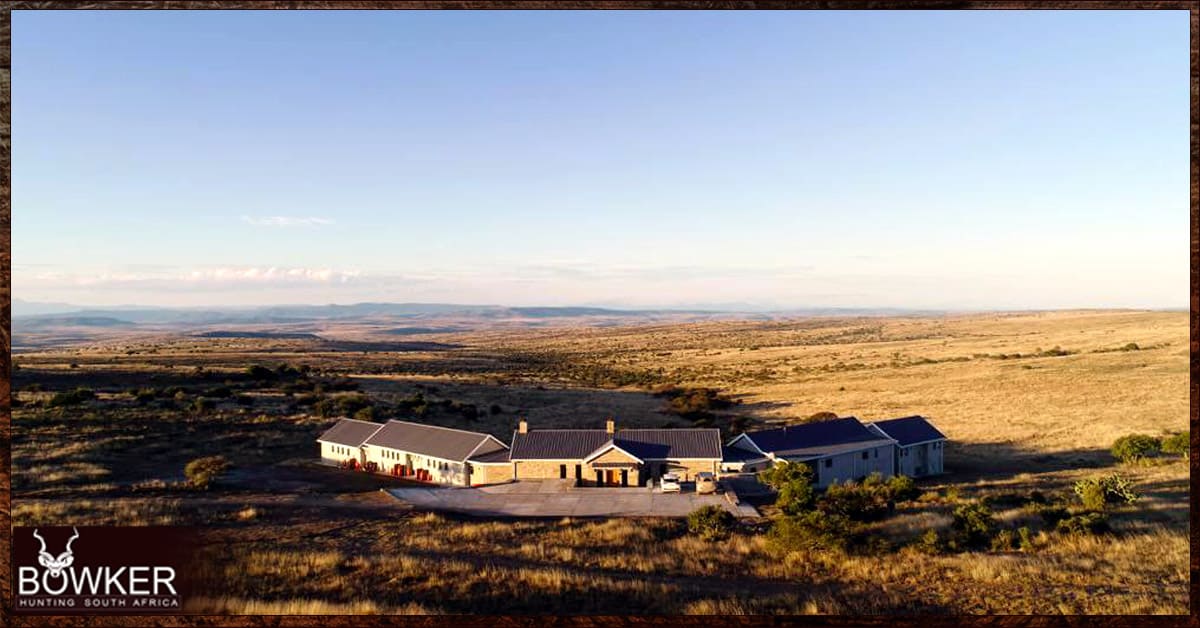
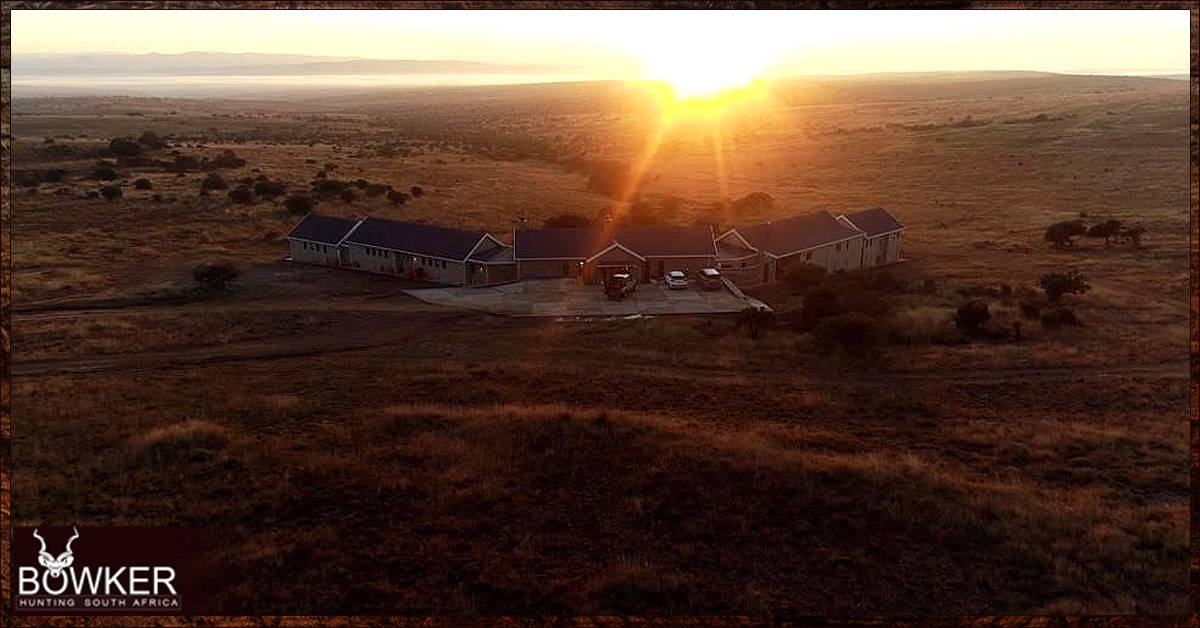
Our luxurious hunting accommodation is of the highest standards, with a splendid charm and charismatic ambiance for your safari. Hopewell is in the Eastern Cape, about an hour and a half drive from Port Elizabeth. Family hunts are most welcome. Are you ready to begin your hunting adventures of a lifetime?
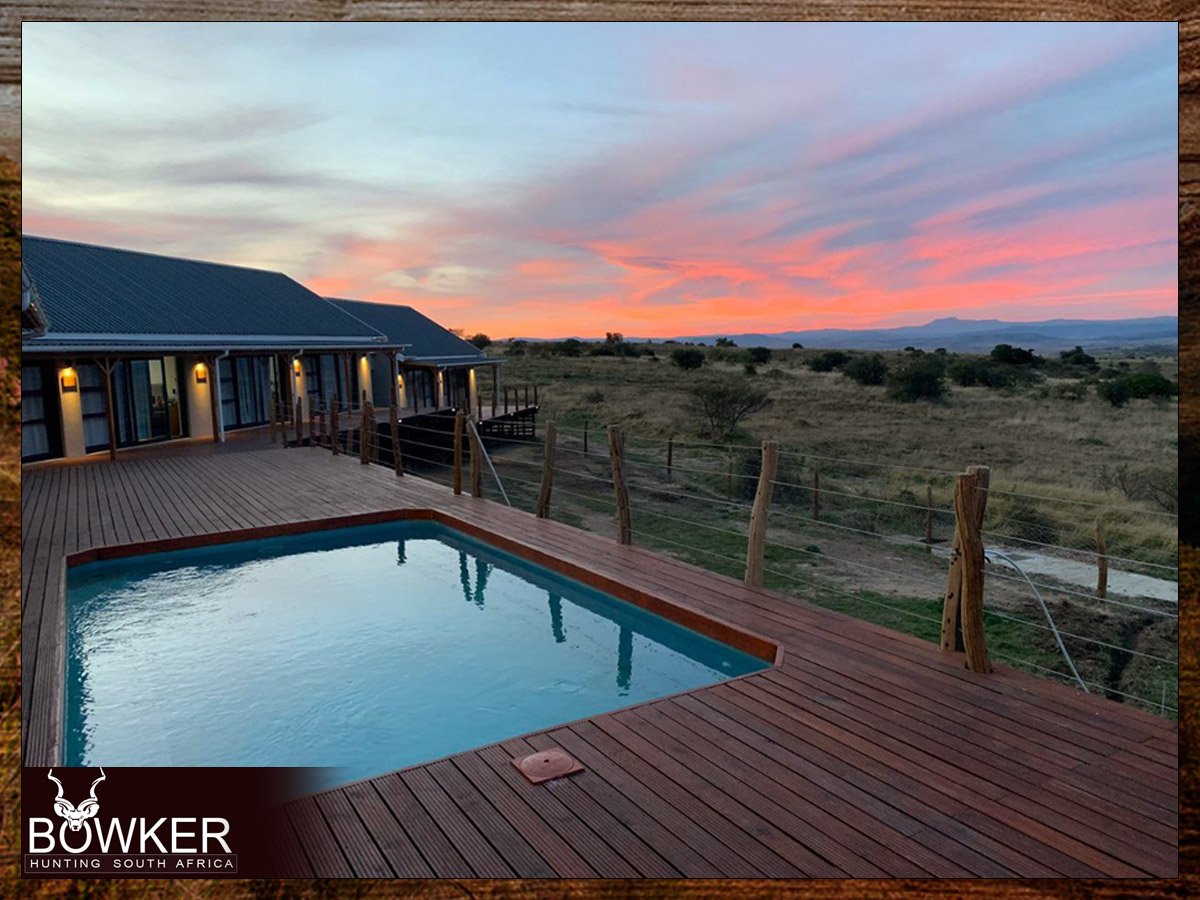
Taxidermy for Your Safari
Nick Bowker hunting will ensure that your Taxidermy is of high quality after your safari hunt. We follow up on delivery and ensure that your trophies are delivered safely after your safari. Please take a look at our taxidermy information and prices.
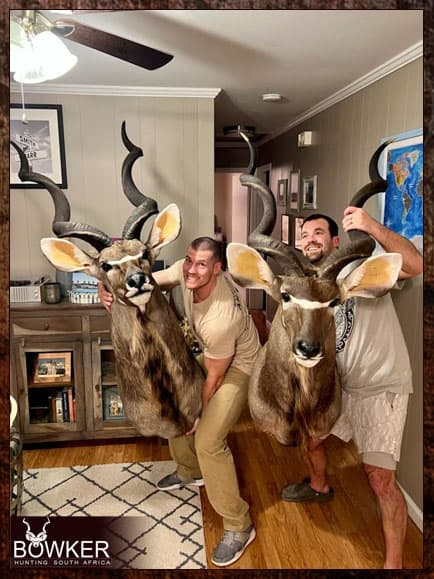
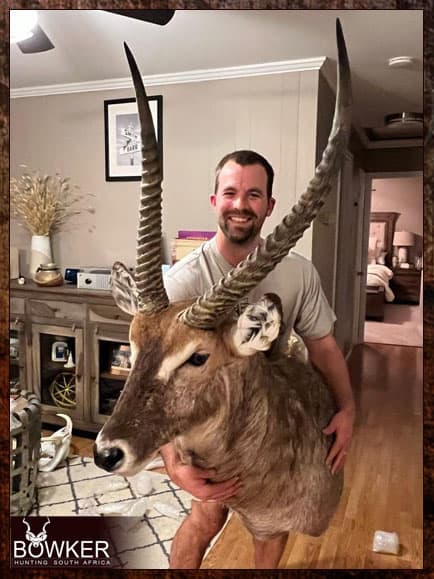
Bow Hunting
We primarily offer rifle-hunting safaris. You are welcome to bring a bow and try for a few animals. However, the majority of the hunter’s trophies will be shot with a rifle.
We do not put out food, control waterholes, and have no blinds in our hunting areas. In addition, we are low-fenced, and the game is free-ranging. We are a 100 percent fair chase, and bow hunters will be doing a real spot and stalk safari.
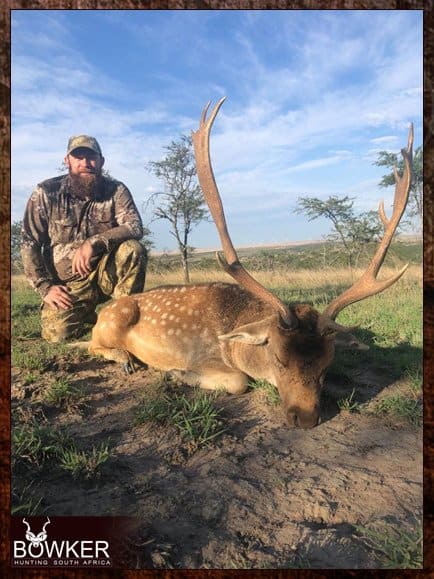
This hunting adventure is not for the novice safari bow hunter as it is highly challenging, and game hunting requires longer shots. Traveling with a bow does not require any documentation or permits. Check it in as you would with golf clubs.
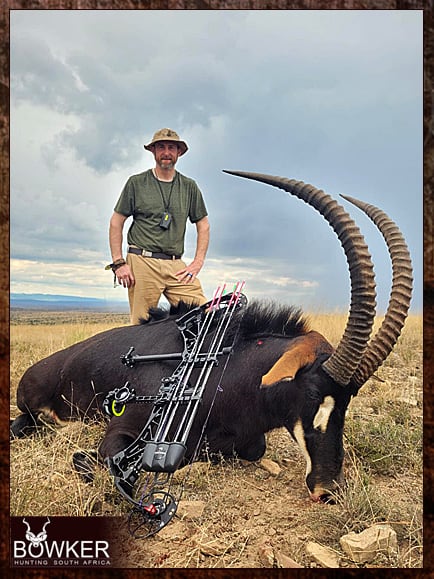
Big Five Guided Photographic Tours
We offer a private guiding service to the National Parks. Our expert guides will drive you through the park to try and find the big 5. Your guide will be with you throughout your safari.
The parks are large with actual free-roaming predators. You can see large parts of the countryside and enjoy an authentic wilderness experience rather than being confined to a small game farm with limited flexibility.
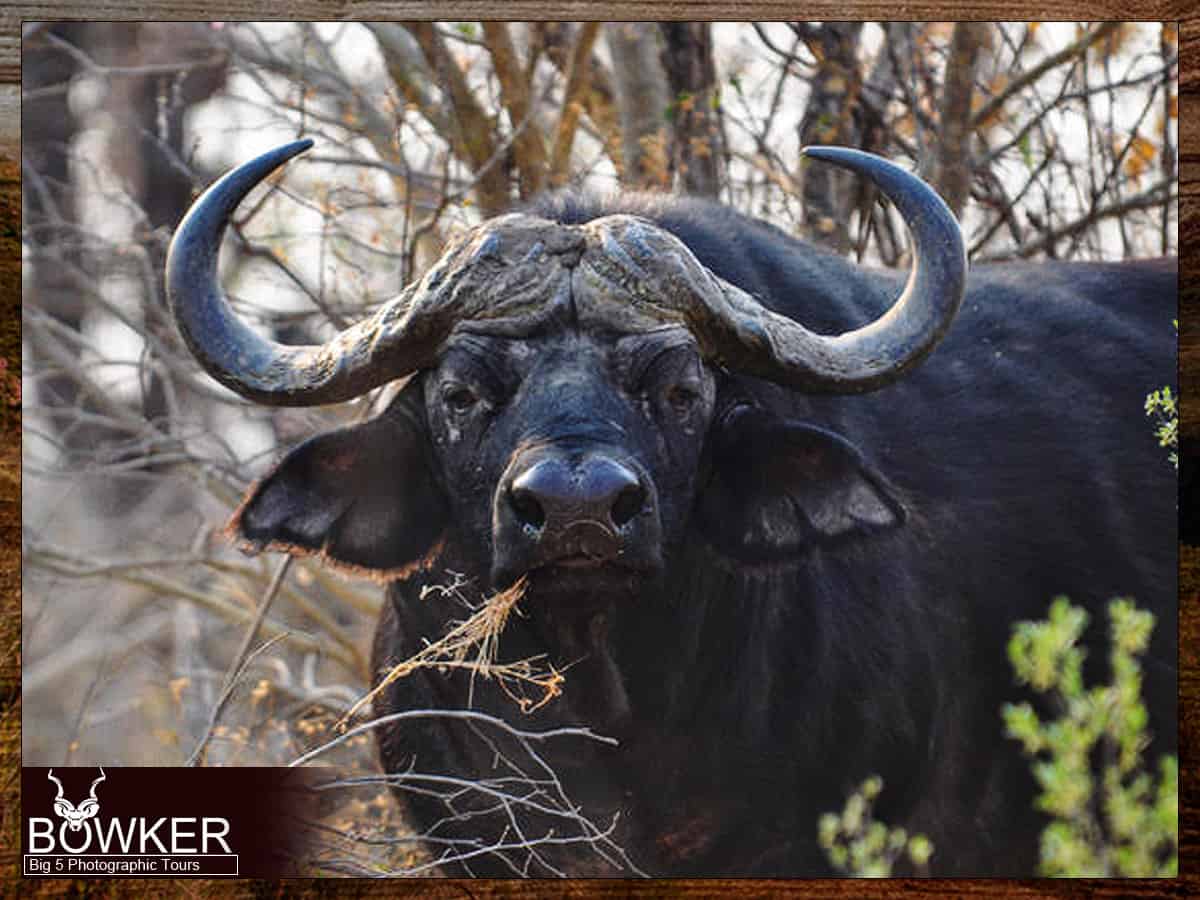
African Hunting Gear
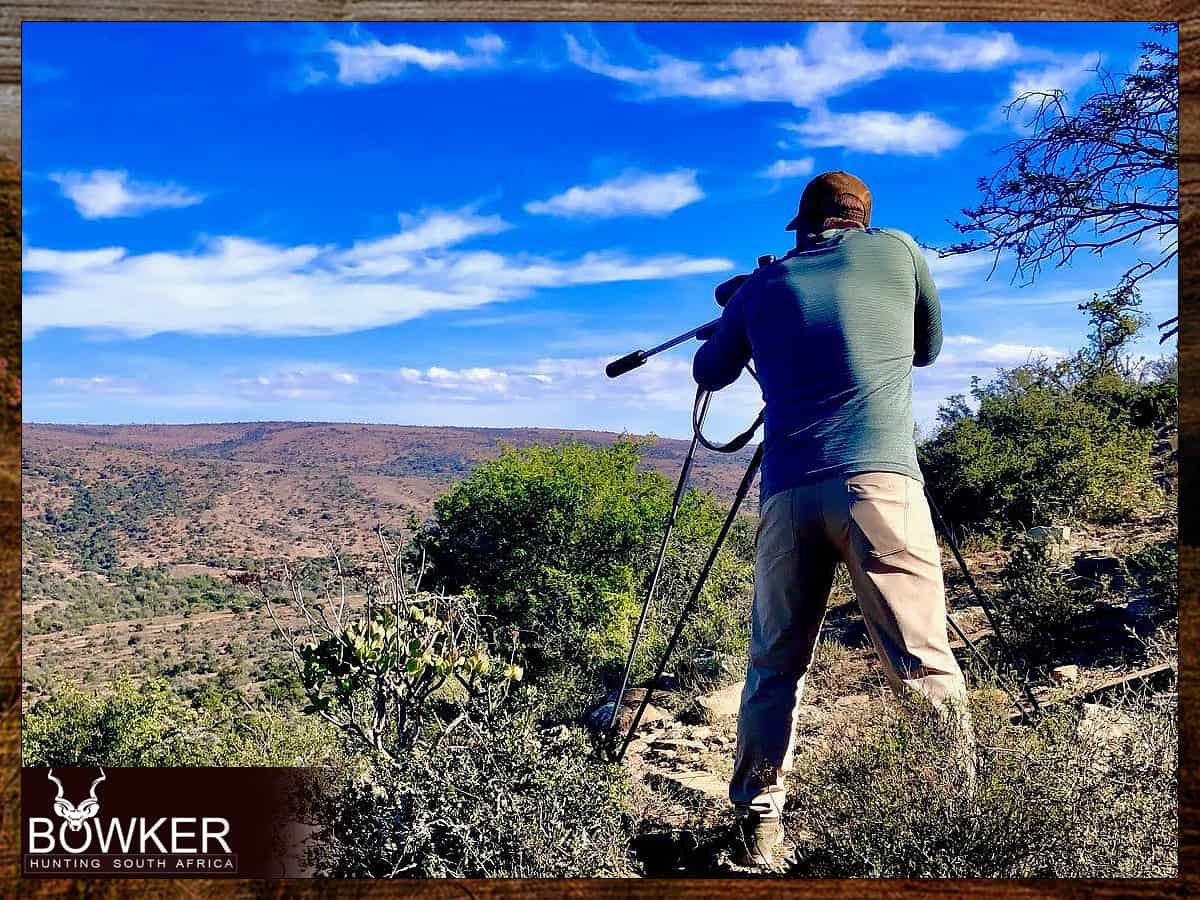
Choosing a rifle for your African hunt safari is crucial for a successful hunting experience. Factors such as the type of game you’re hunting, the terrain and weather conditions, and legal and logistical requirements can all impact your choice of firearm for Africa.
At Nick Bowker Hunting, we believe high-quality safari binoculars are the most essential hunting gear for hunting in Africa. We spend hours glassing through varied terrain while game viewing. You will miss out on large parts of the safari by not having a good set of optics.
Our rifles have state-of-the-art combination suppressors and muzzle brakes for your safari.
We use 300 Win Mags with suppressors as our preferred African safari rifle. Here’s why?
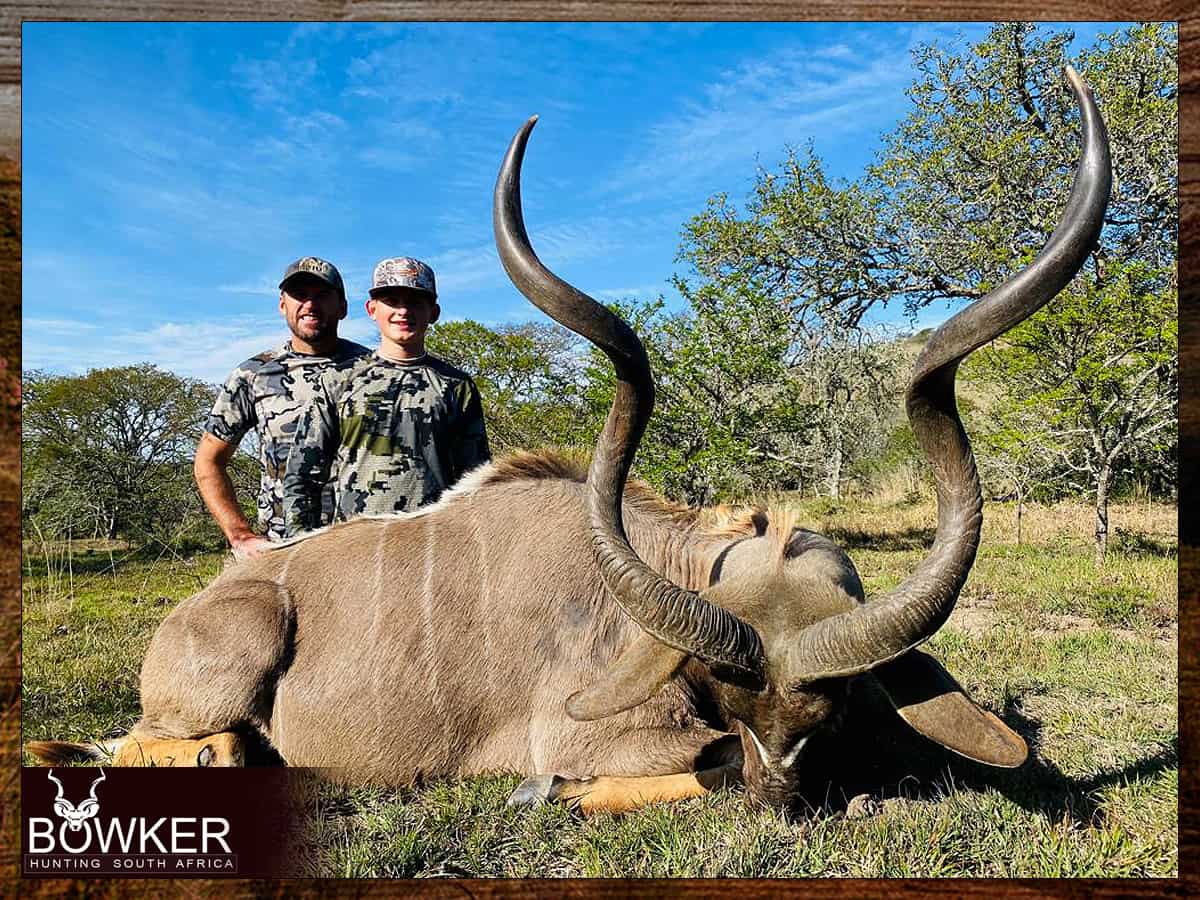
Shooting Sticks on Hunting Safaris
Hunting with shooting sticks is a must in Africa. The hunter should practice ahead of time.
Shooting sticks are often new for the first-time hunter in Africa.
A three-legged shooting stick is a tripod to rest your rifle for support while taking a standing shot. Prone, sitting, and kneeling shots with a rifle are not that common. Because of:
- Africa’s low vegetation obscures your target.
- Hunters lying in a prone position or kneeling can be very uncomfortable. Also, it may not be possible because of rocky terrain, thorns, and other impediments.
- Furthermore, shots in Africa often need to be taken relatively quickly. Consequently, shooting sticks and a standing position facilitate this.
About our Parsons Terriers and Beagle Scent Dogs
Our Parsons Terriers and Beagle scent dogs will be present as partners and companions in South Africa to assist in tracking down trophies that can’t be found or are wounded during safaris. Black Jack the Parson Terrier hunter has obtained legend status!
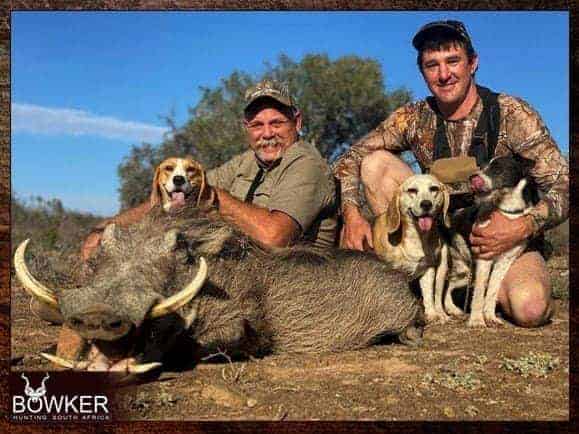
Selecting Your Outfitter
“Are you considering Safari Hunting? Are you overwhelmed and don’t know how to choose an Outfitter in Africa for your African hunt safari?”
“Here is a list of questions to ask a hunting outfitter to help make your choice for an adventure to Africa.”
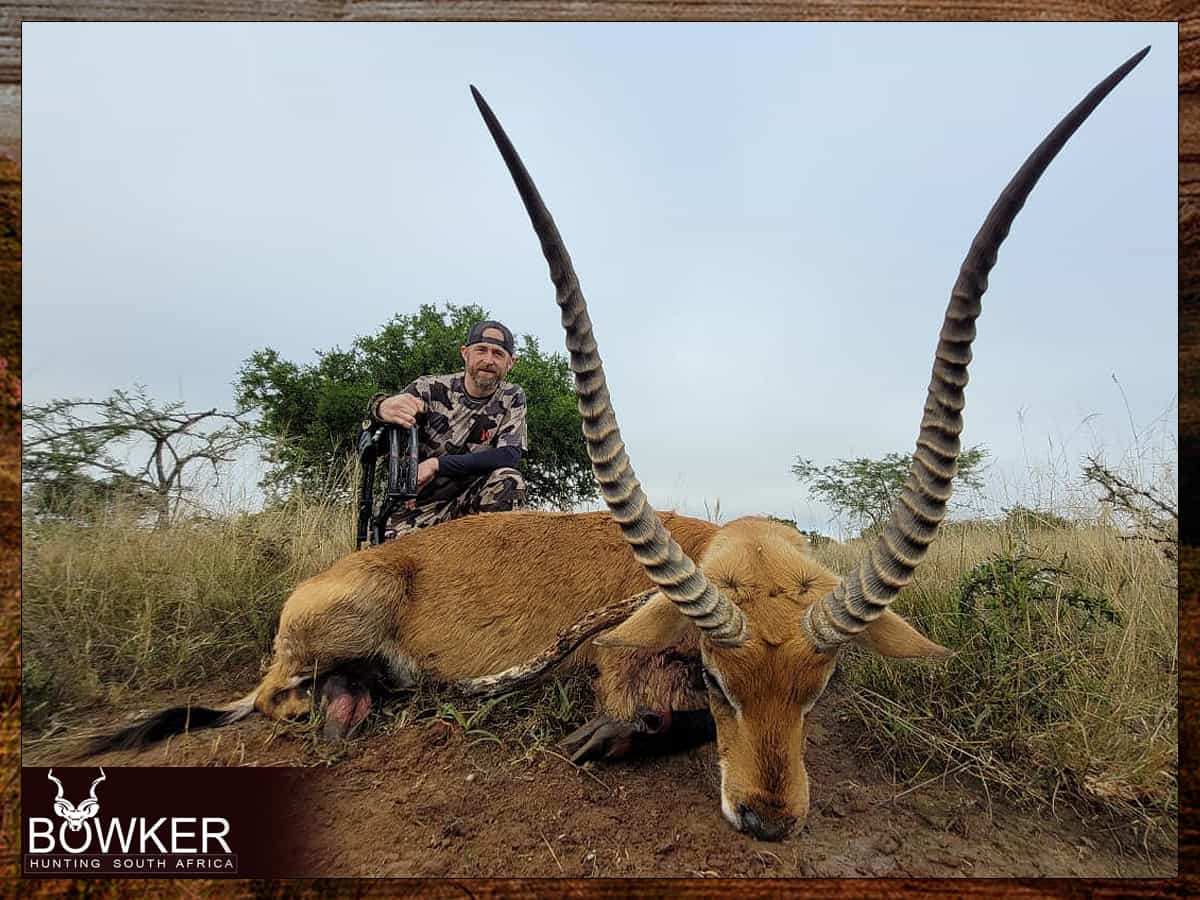
Blogs – African Hunting Trips with Nick Bowker
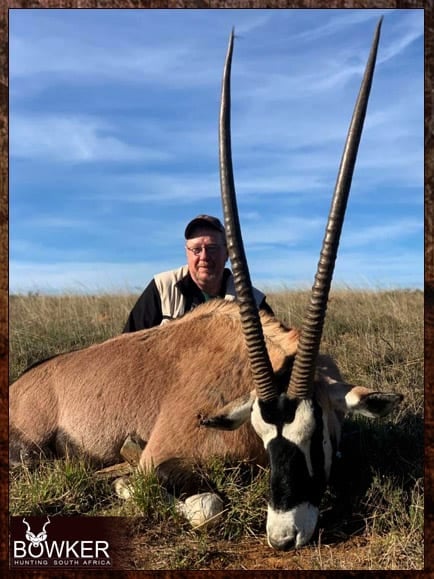
Management and Trophy Adventure
May 2022
“Back from superb safari management and trophy trip with Nick Bowker in South Africa. The start was in 2019 when Nick posted a 20-animal cull hunt. My buddy and I booked for March 2020. Well, we all know what happened, so we went for 2021.
Thanks to our Prime Monster, travel was too risky. Now, in 2022 we finally put the safari together. My self Great Nephew and buddy arrived on the 25th of May in Port Elizabeth, where Nick was waiting for us, and off to Bedford we went for our game hunting safari”.
Review of Nick Bowker
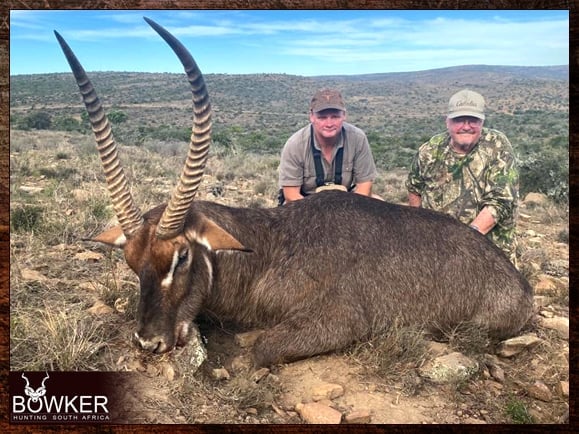

April 2021
“It took me nearly 68 years to determine African hunting safaris are available in South Africa. And it didn’t require being a millionaire to make it happen. I took eight trophies and was treated like a king.
All this for less than a guided Montana Elk Hunt. a far lower percentage of taking just one trophy class bull. Don’t get me wrong. I will never stop chasing the great Wapiti in my home state. I have 400+ bulls hanging on my wall; however, South Africa is the answer when it all comes down to plains game hunting with your family”.
Low Fenced Rifle Hunts
March 2020
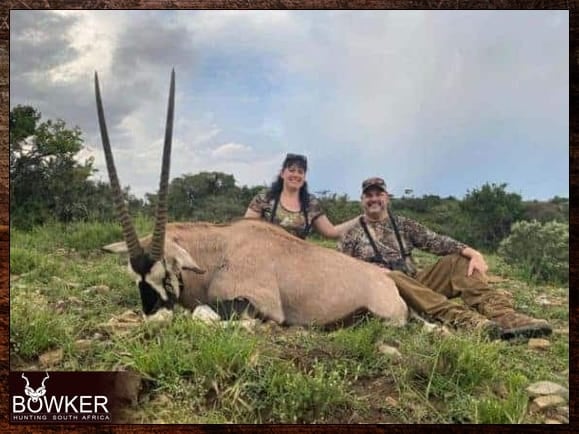
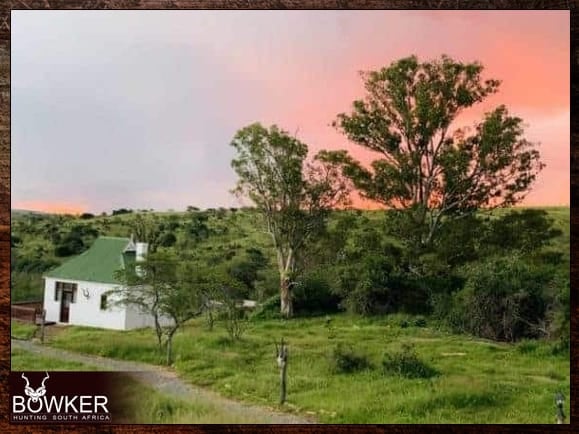
“Hunting with no fences or low-fenced African hunting areas (meant to control sheep, not the wild game) is a priority. Nick’s hunting areas fitted the bill for our hunting party. The plains game herd numbers and variety of animals blew us away.”
Cull Hunt
November 2019
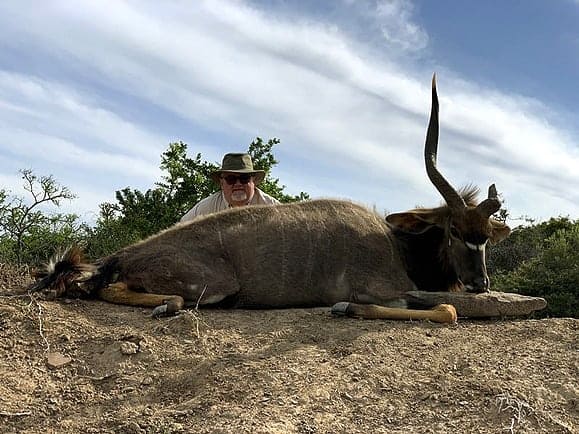
“I saw a posting on another website for an African cull safari package for a twenty animals safari. The package included five trophies and fifteen culls.
The animals in the package were Impala, Blesbok, Mountain Reedbuck, and warthogs. I did not care about the trophies.
I didn’t know what to expect of a cull hunt. Once I saw on TV where someone had a portable shooting bench, and the TV made it look like a shoot and stack them up.
I got the impression that it was a “lesser” form of hunting.
It turned out to be the same as trophy hunting. The difference being a multiple of tags, and your “trophy” has different characteristics.”
My first Plains Game Adventure
October 2019
“An African Safari, the stories of vast lands and a wide variety of game animals. In 2019, my friends invited me on a trip to South Africa.
A trip I am glad to have been part of. Nick Bowker runs a quality operation, with laid back, easy-going, friendly accommodation, and great food.
From Day 1, it was “Hakuna Matata.” Good morning, coffee, and scanning the ever-changing landscape for plains animals.
A grand brunch, a good nap, great company, back to view the countryside for more trophy plains game animals.
To top it off with stories and tall tales of the daily adventures, wine and dine and start all over the next day in Africa.”
Plains Game Experience of a Lifetime
October 2019
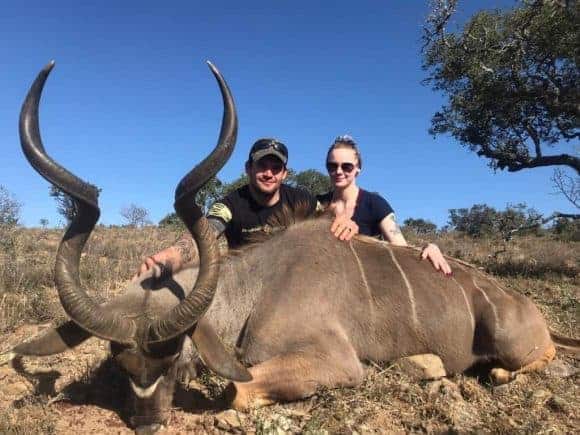
“Growing up, I was an avid reader. “Green Hills of Africa” by Ernest Hemingway and “African Game Trails” by Theodore Roosevelt were always favorites.
I had a deep passion for hunting from an early age. Hunting the dark continent has always been a dream.
This last fall, I had the opportunity to finally make that dream a reality and booked a hunting safari with Nick Bowker.
I chose to hunt with Nick because he runs low-fenced, free-range hunting.
The second reason was that his safaris costs are very competitive compared to others”
First Time Safari
October 2019
“My wife and I decided to take our honeymoon to South Africa for 2 weeks.
We got the opportunity to stumble across Nick’s website while planning, and he was one of the few Professional Hunters that offered single day game hunting.
Outside of the other great hunting safari packages that he has advertised.
Nick and his brother greeted us at the airport and took the short 2-hour drive to his family farm.
While I was after Kudu, my wife had never shot anything outside of two rounds at a target more than a decade ago.”
Armando back from Italy
October 2019
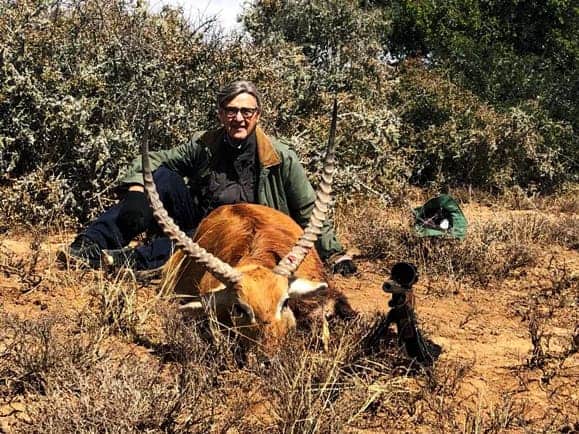
“Armando was back with his wife Roberta for their fifth plains game hunting safari in Africa.
Previously, Armando had made hunting trips to Namibia, the Limpopo bushveld areas, and the Eastern Cape Province.
Armando sought high-quality Lechwe, Nyala, Waterbuck, Warthog, and Bushbuck trophies in a free-range area rather than a high-fenced game farm.
I was on hand to meet Armando and Roberta in Port Elizabeth after their long trip from Italy and drive them back to camp.”
The Czechs arrive
August 2019
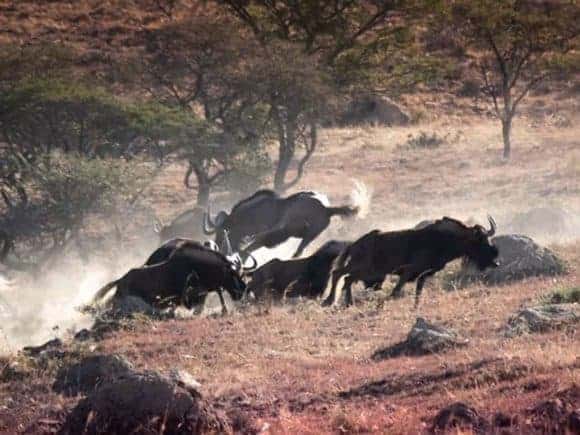
“Rob Bowker collected us from the Port Elizabeth.
I was returning for a 2nd hunting Safari with Nick Bowker.
After having an excellent previous experience with Nick in Africa, I was keen for our next adventure and some new species.
I wanted to bring my friend Andre to some free-range hunting areas in Africa.
Nick is an Outfitter with more than 25 years of professional experience and has offered a 7-animal trophy package and fantastic safaris in Africa.”
Our Hunting Trip with Nick Bowker
April 2019
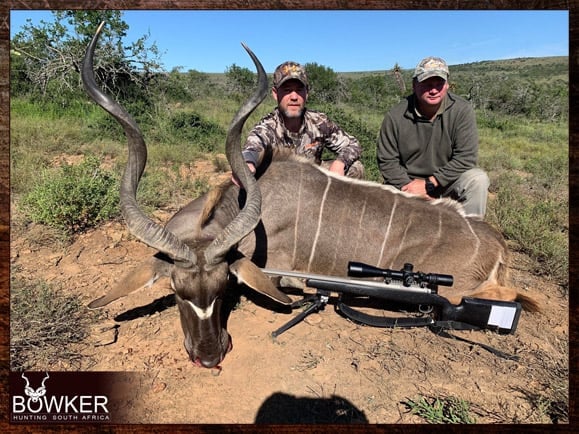
“It was 7 years since our last hunting trip to the Eastern Cape South Africa with Nick Bowker.
I was with my buddy for our second trip with Nick. We wanted to go after some different species this time.
We also wanted to hunt a few of the same animals as our first time in South Africa.
On the last trip, we had had fantastic plains hunting.
In 2012, we took Wildebeest, Impala, and Blesbok.
Nick has appealing 8-day seven animal hunting package safaris available.” Hunters can email Nick for more information about safaris.
My Hunt with Nick Bowker
May 2018
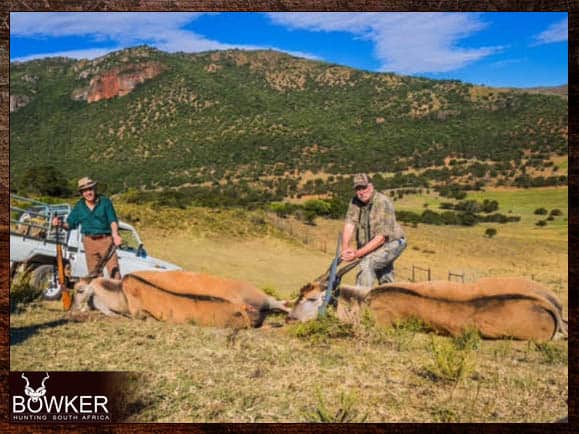
“While touring their quaint log home, Thomas showed us his African plains game trophies.
One thing leads to another, and a year later, Thomas and I are on an airplane to South Africa. Wild!
My first game hunt in another country.
Our host, Nick Bowker, and his brother Rob, rugged 5th generation South African “farmers” of English descent, were most gracious and met us at the “Oliver Tambo” in Port Elizabeth in the Eastern Cape.
Guns, ammo, luggage all right there and a great relief after nearly 24 hours of flight from Minneapolis, Houston, Atlanta, Johannesburg, and Port Elizabeth.”
Frequently Asked Questions About Hunting in Africa
How is hunting in Africa conducted?
Hunting in Africa is conducted “Safari Style,” where hunters drive around searching for plains game. When sighted, hunters stalk on foot.
Alternatively, hunting is from an elevated vantage point, and game is spotted in the thick brush and then stalked. Hunting with a Bow is conducted from hides overlooking watering points.
What is the terrain like?
We hunt in four unique biospheres, resulting in various game and hunting conditions.
Thick Valley Bushveld
Riverine Bush
Plains and Savanna
Mountainous Areas
What shall I pack?
Please pack light; we do daily washing and ironing. Here is a list.
Two pairs of hiking boots
Three hunting shirts (earth color)
Two long hunting pants
One warm jacket
One raincoat
One pullover
Casual outfit for the camp
Loafers
Sleepwear
Cap or sun hat
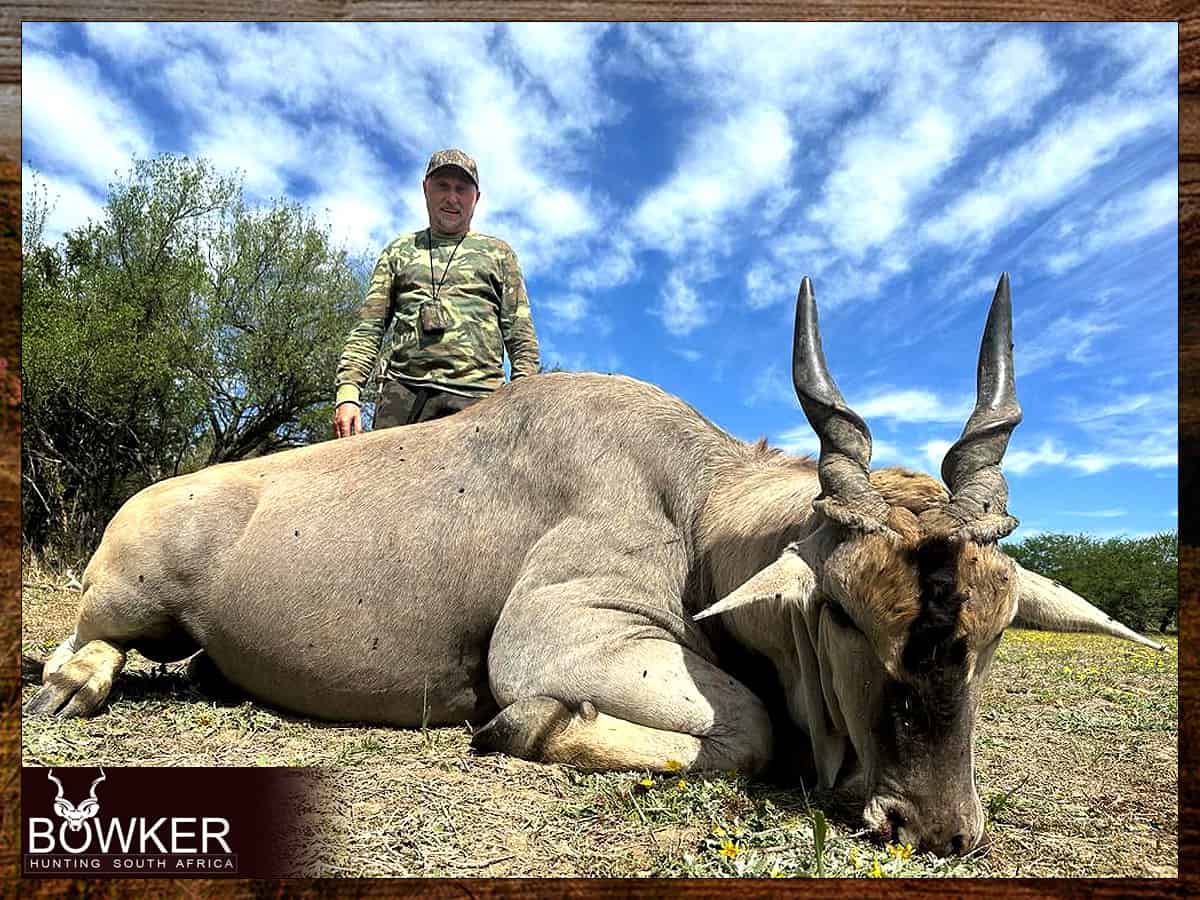
What are the best colors for hunting clothes in South Africa?
Bright colors should be avoided. Earth colors, including khaki, brown, and camouflage, are all fine. Olive green is considered the best color by many South African professional hunters.
What does a typical hunting day look like?
Up at dawn for a cup of coffee and a light snack. Set off to our hunting area for the targeted species.
Generally, we will target the brush-dwelling animals such as the spiral horns in the very early mornings and late evenings when they come out to graze.
We would target Plains Game animals during the day as they are easier to find.
Return for a big brunch around 11h30. Sometimes we will take packed lunch and be gone for the whole day.
Out again in the afternoon for more hunting. Dinner around a fire, discussing the day, and making plans for the next day’s hunting in Africa.
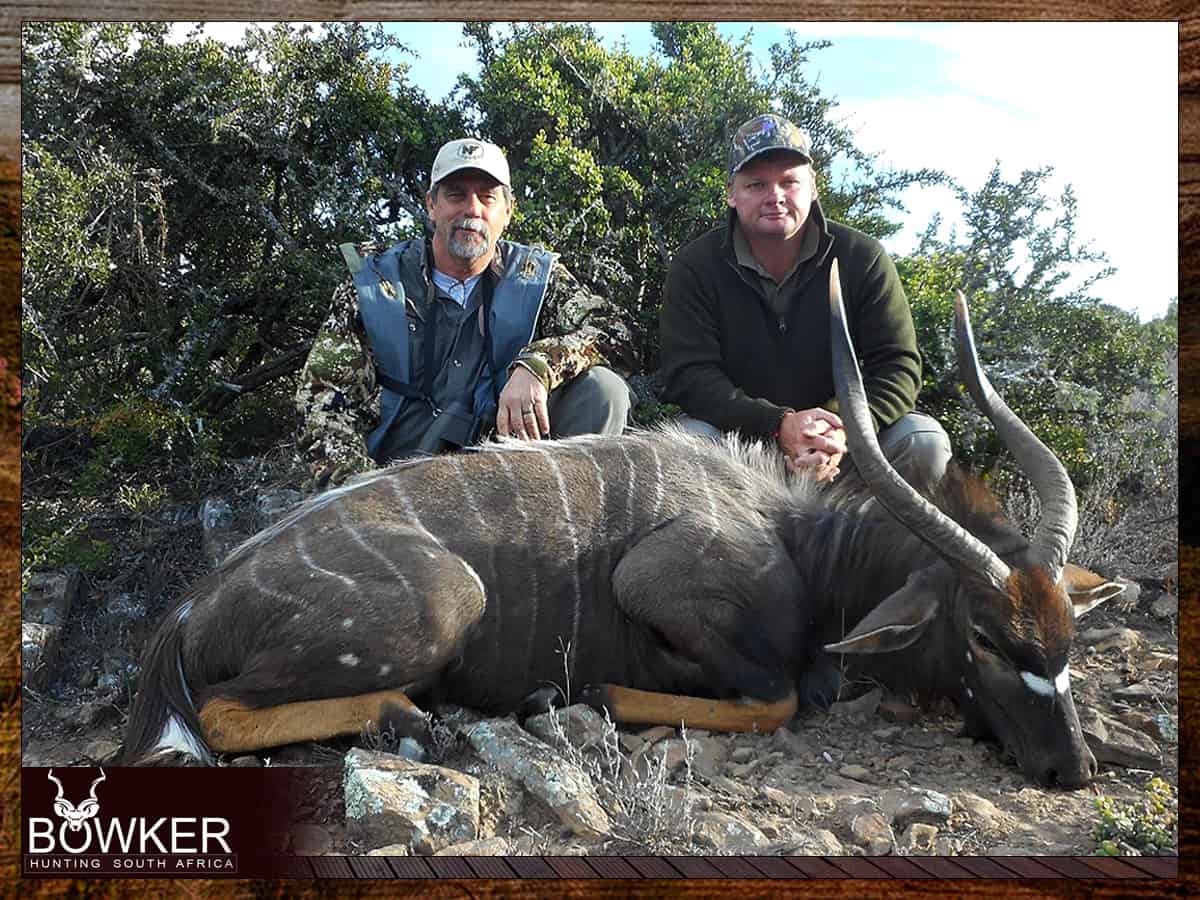
What is the weather like?
The four seasons in South Africa are;
Summer – December through February
Fall – March through May
Winter – June through August
Spring – September through November
During the winter months, expect around 65°F – 75°F. In the fall and spring, temperatures range between 70°F and 80°F. Summer months are hot at around 80°F – 95°F.
Rain falls mostly in the summer months in the form of thunder showers.
When is the best time for hunting in South Africa?
March through October is the best time to hunt. The weather is cooler during this period.
What sort of food can I expect while on my hunting safari?
The food will be very similar to that served in the United States. Also, you can request any dishes within reason.
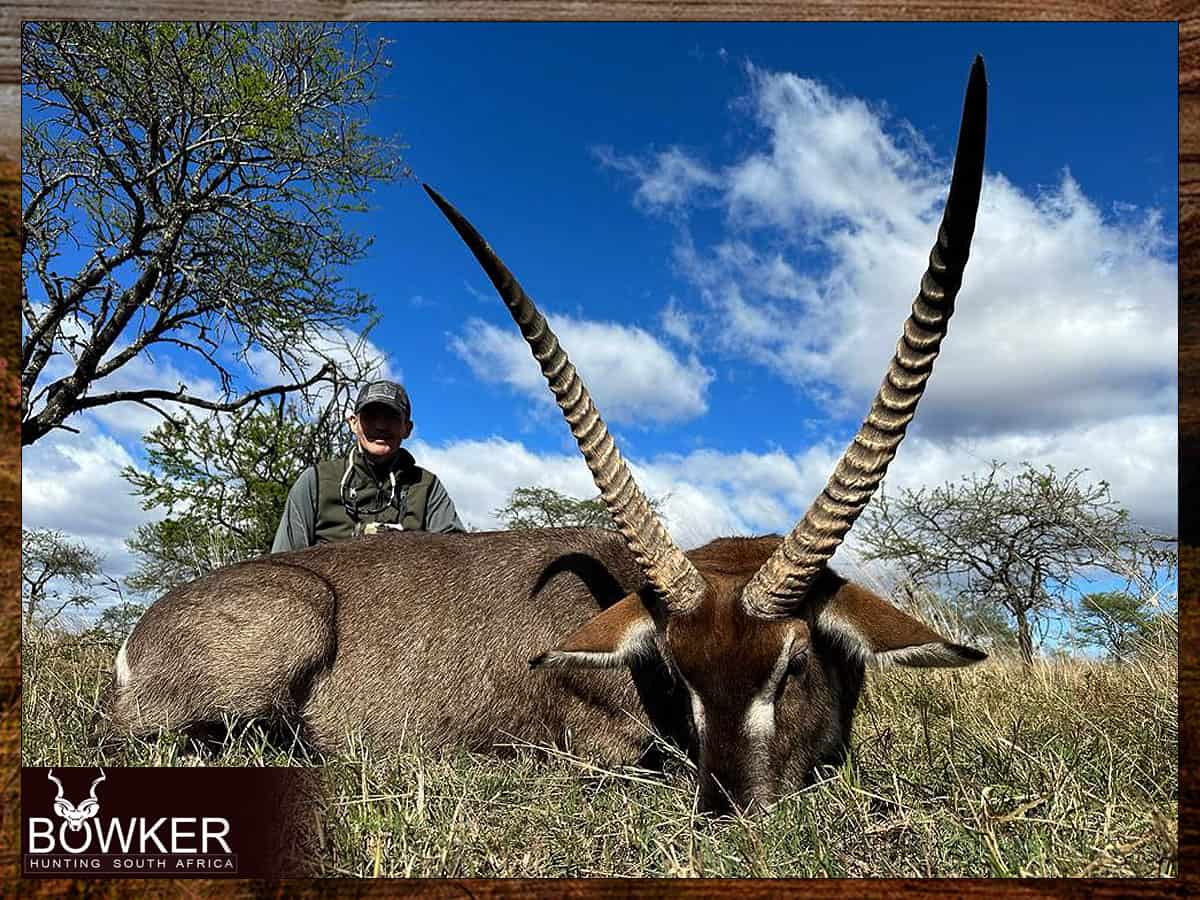
What beverages can I expect around the dinner table?
Local wines and beers are of excellent quality. And similar to that of the United States. We will enquire as to your preferred evening beverages.
Should I have my taxidermy done in South Africa or the United States?
Taxidermy costs will be considerably cheaper in South Africa. In addition, South African taxidermists specialize in African trophies.
Who will ensure the taxidermy is done according to my specifications?
We will be responsible. We will enquire about the type of mount you require and ensure the skinner’s cape accordingly. In addition, we will arrange pick up by our taxidermist.
